Review: Airfix 1/72 Dornier Do-17Z
The Dornier Do-17 series was referred to as the Fliegender Bleistift ("flying pencil"), due to its narrow fuselage. The original story about the origins of the Do-17 was that it was designed as a fast mail plane with limited passenger-carrying capability, which was originally a failure when it fist appeared, until a decision was made to develop it as a Schnellbomber ("fast bomber"), a light bomber which theoretically would be fast enough to outrun defending fighter aircraft. In fact, when the decision was made to pursue development at the end of 1933, the RLM issued an order for a "high speed aircraft with double tail," and for a "freight aircraft with special equipment," in other words, a bomber. Following the public announcement of the existence of the Luftwaffe in 1934, the design was specifically modified with proposed armament to become a bomber.
The original prototypes were powered by low-compression BMW VI 6.3 engines. The initial production types, the Do-17E and Do-17F, were powered by the BMW VI 7.3D engines. Dornier believed better performance could be obtained with high-powered engines. What became the Do17M and Do-17P were powered with the Bramo 323 Fafnir engine, which gave considerably more power than the BMWs.
The Do-17J was powered by the BMW 132F radial engine, which still did not meet the original performance requirements. What became the Do-17L and Do-17M used the DB 600 engine in their prototype forms, with the Do-17M demonstrating a top speed of 264 mph at the Zurich International Air Meet in 1937. However, the need of the Daimler-Benz engines for fighters resulted in the production Do-17M using the Bramo 323 radial, while the Do-17P used the BMW 132.
The "definitive" sub-type was the Do-17Z, which attempted to deal with the problem of lack of power in the original sub-types. Following operational experience in Spain, the "definitive" Do-17 was designed with a deeper nose that allowed better defensive armament to be installed with a fourth crewman to operate the lower gun. The changes in the roof and floor made the whole front of the aircraft much larger, while the rest of the airframe remained the same as before. The new cockpit design was nicknamed Kampfkopf (German: "Battle head") While Dornier hoped to use the DB 601 engine, the priority of the Bf-109 and Bf-110 for this powerplant led to continuing use of the Bramo 323 series in what became the Do-17Z, which first appeared in 1938. Using the Bramo 323P-1 engine providing 1,000h.p., the Do-17Z-2 was capable of a top speed of 265 mph when lightly loaded, though its range was short.
The Do-17Z appeared in squadron use in time to participate in the invasion of Poland. During the Battle of France, the short range of the bomber meant that it often was sidelined while awaiting the capture of airfields closer to the front lines. The airplane was popular with its crews for its speed which was only bettered by the Ju-88, and its maneuverability, which was the best of any of the early war German bombers at low altitude which resulted in the Do-17Z being employed in the low-level bombing assault role. By the time of the Western campaign, the Do-17Z was used by four Luftwaffe bomb groups, KG 2, KG 3, KG 76 and KG 77.
The Do-17Z was the primary bomber used in the initial phase of the Battle of Britain, the Channel attacks against British convoys in July and early August. When the campaign extended to Britain itself after August 15, the Do-17Z was used for low-level attacks against RAF airfields in 11 Group. While the airplane had been fast enough to almost live up to its name as a Schnellbomber when opposed by the Poles, the Dutch, the Belgians and the French, it met its match with the RAF Hurricanes and Spitfires, which were fast enough to catch it at low level with increased losses. After September 7, the bomber's low-level advantage became moot when the Luftwaffe was ordered to bomb London from high altitude, and losses increased even more. Famously, on September 15, "Battle of Britain Day," Do 17Z-2 Wk Nr.2361, coded F1+FH, of 1.Staffel/KG 76, flown by Robert Zehbe, was shot down with the main part of the wreckage crashing into the forecourt of Victoria Station, eliciting a congratulatory message to the RAF from Queen Wilhelmina of the Netherlands who witnessed the event.
In August 1940, 54 Dorniers were lost with another 20 written off due to technical problems and accidents. In September, 50 more were lost, with 31 Do 17Zs and crews missing in action. In October another 36 Dornier bombers were lost. The Do 17's losses in the Battle of Britain were between 132 and 171, the lowest losses as a ratio of the three German bomber types - the Do-17, He-111 and Ju-88. When the Luftwaffe switched to night bombing, the Do-17 was withdrawn from operations in France because of its light bomb load. With the arrival of the Ju-88 in large numbers and the more powerful Do-217 about to enter service the following year, the days of the Do-17 were numbered. When the Russian campaign began in June 1941, only KG2 was still fully equipped with the Do-17Z, though staffeln of the other three Kampfgruppen still used the type. Production ended in the summer of 1940 in favor of the Do-217. 15 Do-17Zs were provided to the Finns in 1941 and operated until 1945, while 20 were given to the Croatian air force in 1944. Small numbers of the Do-17Z were also modified as the Do-17Z Kauz night fighter, where they were found to be inferior to the Ju-88C-6. The last Do-17Z was scrapped in Finland in 1952.
On September 3, 2010, the Royal Air Force Museum in London announced the discovery of a Henschel-built Dornier Do 17Z buried in the Goodwin Sands off the coast of Kent, England. On June 10, 2013, the salvage team successfully raised the airframe from the seabed and it is currently undergoing restoration at the museum facility at Cosford.
Prior to the release of this kit by Airfix this past Spring, the only Do-17Zs in 1/72 had been released by Monogram in 1966, nearly 50 years ago, and by Frog around the same time. Both were "products of their time" with dodgy fit and virtually no interior detail . Classic Airframes released a limited-run Do-17Z in 1/48 some five years ago, and ICM is presently scheduled to release the Do-17Z in 1/48 this summer.
This new kit by Airfix continues the high standard that has been achieved in their most recent releases. The interior is fully detailed, with a complete cockpit, as well as a complete bomb bay. The bomb bay is provided all the different bomb and gas tank combinations used operationally, and can be displayed open. The flaps are separate and can be posed down. The horizontal stabilizer, which could change its angle of attack, can be posed at different angles. Decals are provided for a Do-17Z of KG 77 in the summer of 1940 and a Do-17 used by the Croats in 1944-45. All of the small parts such as landing gear, machine guns, etc., are properly petite for the scale. You can see more at this link.
If a modeler uses the instruction sheet, they are guaranteed a good final result. The new Airfix instruction sheets are very user-friendly, unlike too many others, and really reduce problems in figuring out what goes where when.
I began by painting all the cockpit interior parts, bomb bay parts, wheel well doors, and landing gear with Xtracrylix RLM 02, which I then oversprayed with thinned Tamiya "Smoke" to pop out detail. I also painted the engine parts at this time and detailed them. The detail provided in this kit is really astounding for 1/72 scale, and is competitive with many 1/48 kits. The clear parts are very clear, so all the effort put into the cockpit will be seen.
The new Airfix kits feature quality molding. If care is taken in assembly, you will not need seam filler anywhere. Using the excellent instructions, I had the model assembled in an afternoon.
The one big problem with the kit is masking off all those flat panels of glass in the nose and canopy. Doing this with Tamiya tape and a #11 X-acto took most of a day with time off to rest my eyes from the concentration necessary.
The model was pre-shaded, then painted in the standard Luftwaffe camouflage of RLM 70/71 upper surfaces and RLM 65 lower surfaces. Rather than freehand in this scale, I masked off the patterns with Tamiya tape.
The kit sheet provides complete stenciling. All the decals used reacted well to Micro-Sol and went down without a problem. When everything was set, I washed the model to get rid of any remaining solvent residue.
I gave everything a coat of Xtracrylix Flat varnish. I then assembled and attached the landing gear, gear doors and bomb bay doors. I detached the canopy and nose cone, attached the machine guns in position and then glued these parts into permanent location.
This kit is without a doubt the nicest, most accurate Dornier Do-17Z available in any scale. Airfix could scale this up to 1/48 without creating additional parts, and it would look superb. The kit provides no problems for anyone who has built a couple of models and is willing to take the radical act of reading and following the instructions. Airfix is definitely back!
In closing, I'd like to thank my government-paid, bureaucrat-run, health care system (aka the VA) for the cataract surgery last fall that changed my right eye from 20/400 back to 20/20, thus giving me visual acuity I haven't had in 30 years, which has allowed me to re-discover the joys of 1/72 modeling, just as Airfix has stepped up to release a slew of great new models in that scale that will tempt anyone back to their modeling roots.
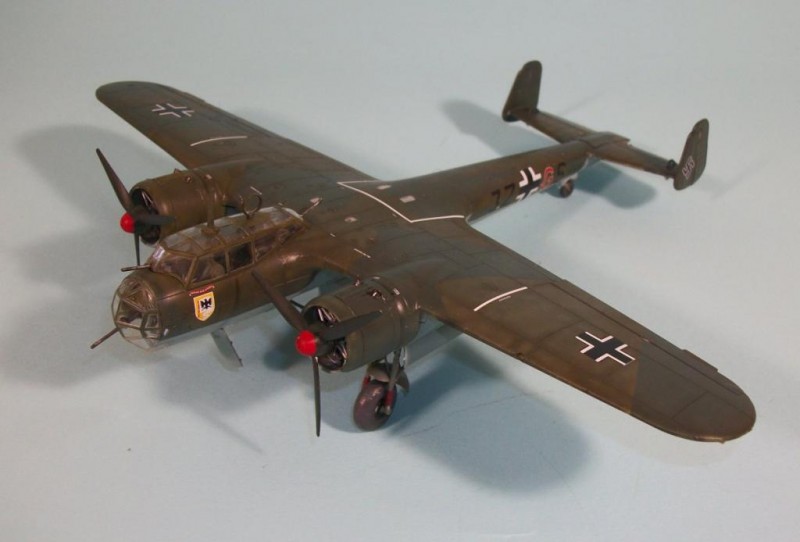

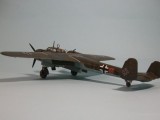
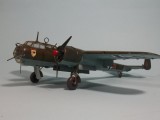
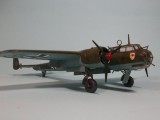
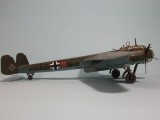
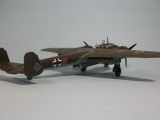
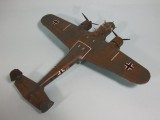
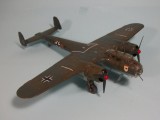
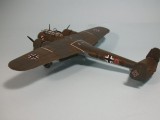
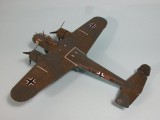
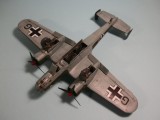
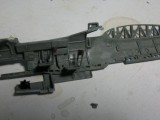
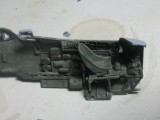
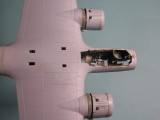
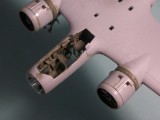
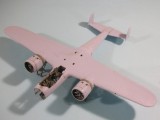
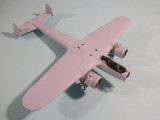
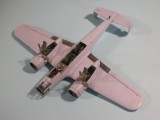
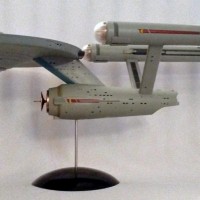
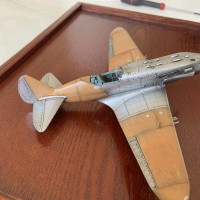

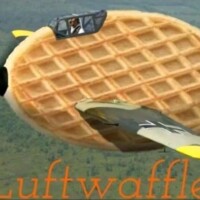
Another modern miracle of medicine and craft...stirred but, not shaken to create a model with some real Mojo. A real strong piece of work TC. Welcome, back to the world of 1/72nd.
Hey Tom, I really enjoy your work, another great build, keep them coming, and I will keep drooling. Great build.
Marc
Well done Tom. I see a renewed interest lately, after they dragged that one from the sea, and you've given us a nice example here. I'm glad you included some build pictures, as this helps spark my interest. Airfix should pay you a royalty !
Hornby USA still provides review copies, unlike Hornby UK.
Greetings :
Got back from my FLORIDA trip to DAYTONA ( planning to go back for other reasons but will take advantage of the MODELPALOOZA in ORLANDO), and was caught by the delightful surprise of this model.
Very nice work Tom. That Do-17Z really looks like a piece of history.
Thanks for sharing the pictures, that model is one good eye candy.
Don't think I've ever seen you do 1/72 before Tom, looks great; what a nice kit. Glad to hear the eye surgery went well, can we expect to see more small scale stuff?
Yes. Hornby USA is supplying me all the new Airfix stuff. Currently have a Defiant awaiting new Xtradecal sheet, two ragwing Hurricanes awaiting decals, and have the two Blenheims in their boxes.
Great looking Do-17, and as always I'm happy to see 1/72 builds! I've got one of the old ones - I think it's in a Matchbox box - but now I'm wondering if I should just chuck it and buy the new Airfix...
(I'm kinda cheap, so I may just build it an let the chips lay where they may!)
Get the new kit, it is sooooooooo muche superior to any Do-17 kit in any scale that has come before. Really, seriously, you can't do better.
Nice looking build, very detailed!
And it's all there in the box.
One other thing I meant to ask - I'd love to see more detail, and if you could use a graphic program to just lighten up your pics a bit we'd be able to see more... (there are free web-based graphic editing programs you could use).
Not a criticism - just a suggestion! I can still tell your work is exemplary!
What Tom said, folks. I've got one, and it's stunning. Alternate bomb loads? Unbelievable! Good cockpit detail, probably there will be loads of alternate decals from the aftermarket. Buy with confidence!